Author: Paul Amico
CTZ is an initialism for the names given to essentially the same hop by different companies– Columbus, Tomahawk, and Zeus. Curiously, while Zeus hops have been shown to be genetically distinct from Columbus and Tomahawk, the colloquial use of CTZ appears to have stuck. Bred in the 1970’s and released in the 1990’s, CTZ was initially marketed as a high alpha variety with solid bittering potential, though it quickly came to be known as a decent dual-purpose variety with the ability to impart beers with a pleasant blend of earthy, spicy, and dank fruity characteristics.
Alpha: 14 – 16%
Beta: 4.5 – 5.0%
Cohumulone: 28 – 32% of alpha acids
Total Oil: 2.5 – 3.5 mL/100g
Myrcene: 50 – 60%
Humulene: 12 – 18%
Caryophyllene: 9 – 11%
Farnesene: <1%
Linalool: 0.4 – 0.6%
ß-Pinene: 0.6 – 1%
Geraniol: 0.2 – 0.5%
Parentage: Daughter of Nugget
As a brewer of nearly a decade, I’ve used CTZ quite a bit and have developed an appreciation for what it brings to the party. Having only ever used this variety in conjunction with other hops, I was excited to see how it’d play in a single hop Pale Ale!
| MAKING THE BEER |
Starting with the standard Hop Chronicles base recipe, I made small adjustments to the hopping rates in order to keep the bitterness of the finished beer in check.
CTZ Pale Ale
Recipe Details
| Batch Size | Boil Time | IBU | SRM | Est. OG | Est. FG | ABV |
|---|---|---|---|---|---|---|
| 5.5 gal | 60 min | 42.1 IBUs | 5.6 SRM | 1.054 | 1.012 | 5.4 % |
| Actuals | 1.053 | 1.011 | 5.5 % | |||
Fermentables
| Name | Amount | % |
|---|---|---|
| Lamonta American-style Pale Malt (Mecca Grade) | 10 lbs | 83.33 |
| Vanora Vienna-style Malt (Mecca Grade) | 2 lbs | 16.67 |
Hops
| Name | Amount | Time | Use | Form | Alpha % |
|---|---|---|---|---|---|
| Columbus/Tomahawk/Zeus (CTZ) | 12 g | 40 min | Boil | Pellet | 14 |
| Columbus/Tomahawk/Zeus (CTZ) | 12 g | 25 min | Boil | Pellet | 14 |
| Columbus/Tomahawk/Zeus (CTZ) | 12 g | 15 min | Boil | Pellet | 14 |
| Columbus/Tomahawk/Zeus (CTZ) | 56 g | 2 min | Boil | Pellet | 14 |
| Columbus/Tomahawk/Zeus (CTZ) | 56 g | 4 days | Dry Hop | Pellet | 14 |
Yeast
| Name | Lab | Attenuation | Temperature |
|---|---|---|---|
| Dieter (G03) | Imperial Yeast | 75% | 60°F - 69°F |
Notes
| Water Profile: Ca 92 | Mg 1 | Na 10 | SO4 153 | Cl 50 |
Download
| Download this recipe's BeerXML file |
I started my brew day by collecting the full volume of water, which I adjusted to my desired profile before turning on my electric controller.
As the water heated, I weighed out and milled the grains.
Once the strike water was properly heated, I stirred in the grains and check to make sure I hit my desired mash temperature.
During the mash rest, I weighed out the kettle hop additions.
When the 60 minute mash rest was finished, I removed the grains from the sweet wort and set the controller the heat it up. Following a 60 minute boil, I used my CFC to chill the wort during transfer to a sanitized fermenter.
A refractometer reading indicated the wort hit my target OG.
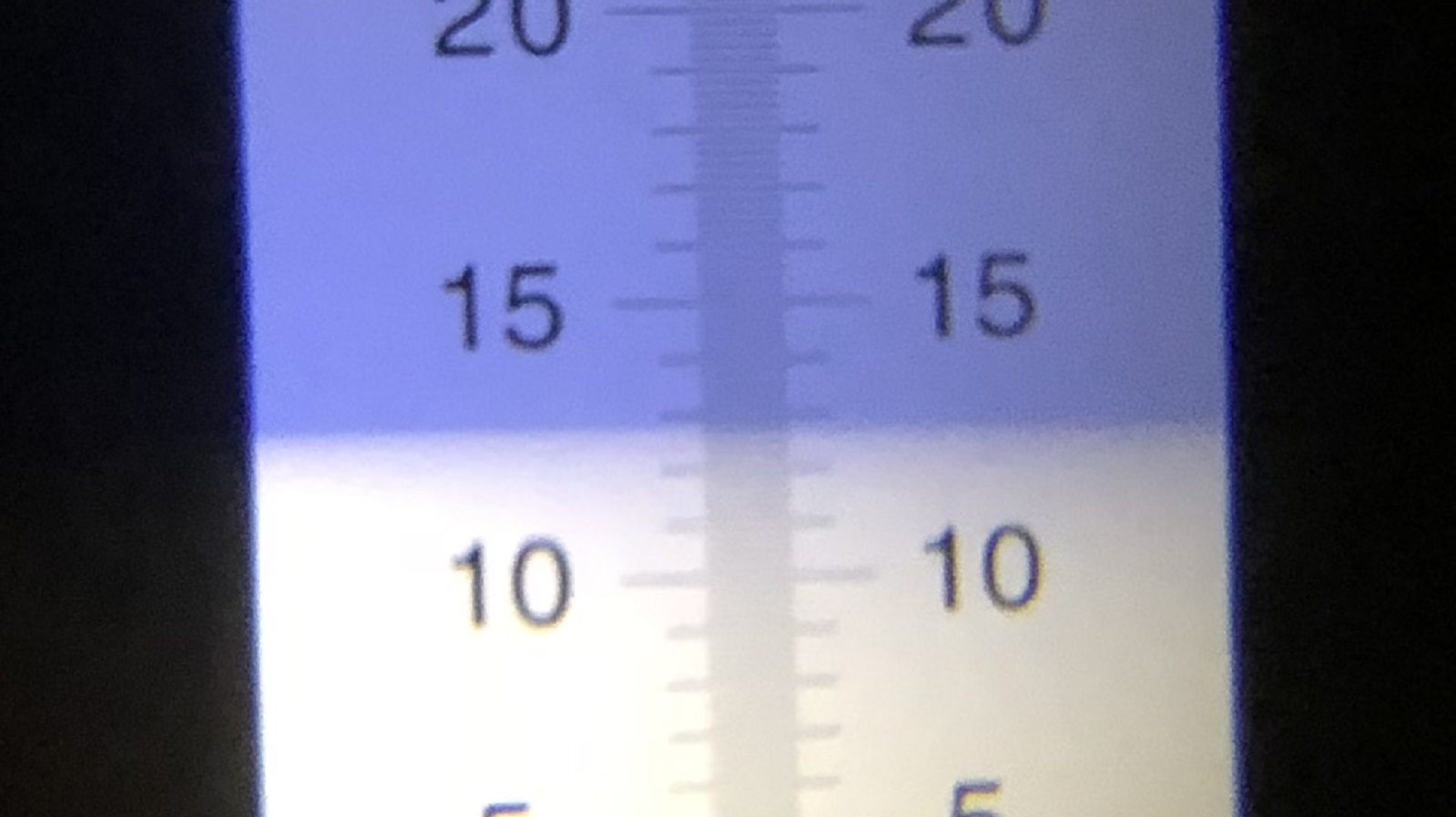
After a couple hours in my temperature controlled chamber, I pitched a pouch of Imperial Yeast G03 Dieter directly into the wort.
The beer was left to ferment at 66°F/19°C for 11 before I took a hydrometer measurement confirming FG was reached.
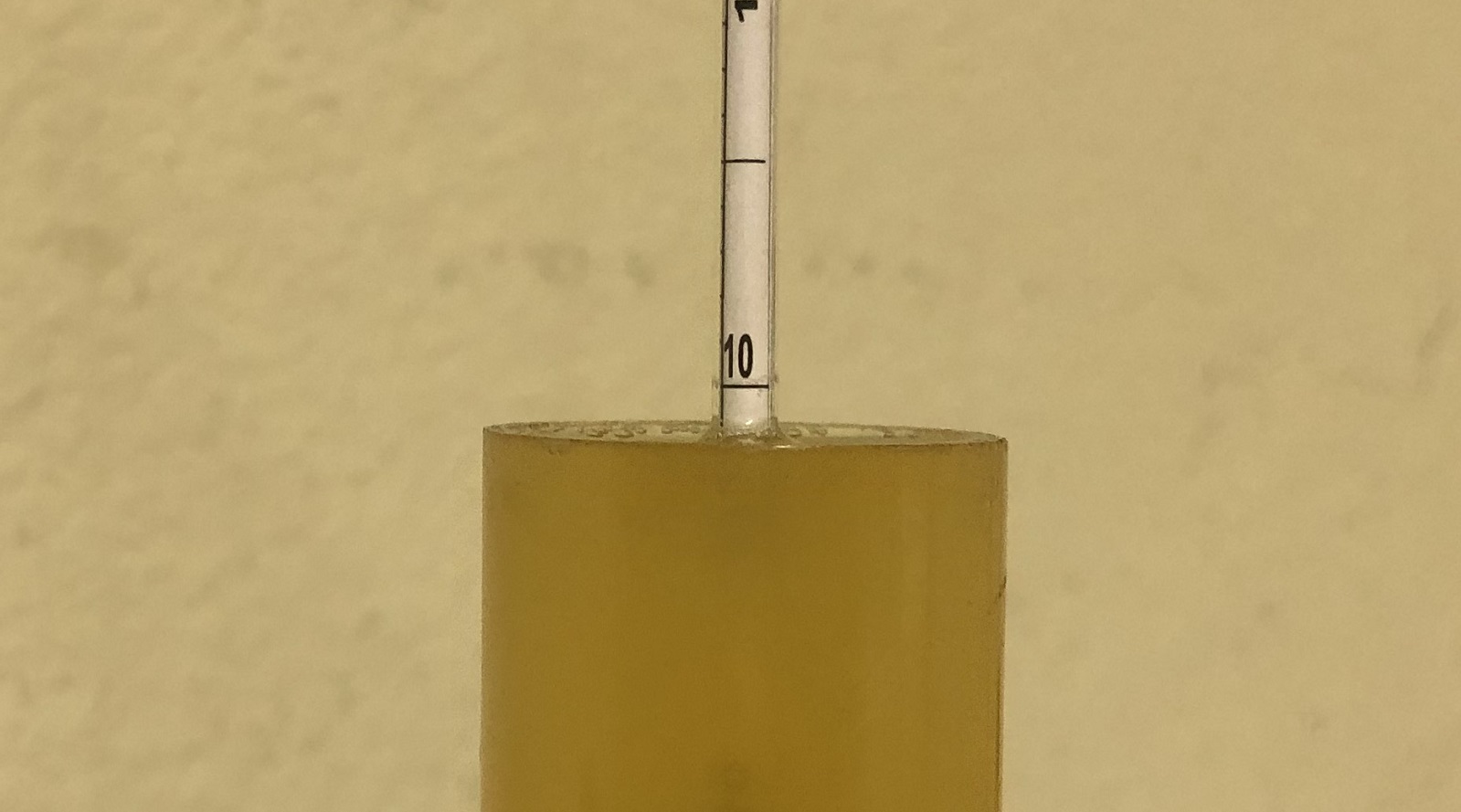
With fermentation complete, I pressure transferred the beer to a CO2 purged keg.
The filled keg was placed in my keezer and burst carbonated overnight before I reduced the gas to serving pressure. After a week of conditioning, I began serving it to blind tasters.
| METHOD |
Participants were instructed to focus only on the aromatic qualities of the beer before evaluating the flavor. For each aroma and flavor descriptor, tasters were asked to write-in the perceived strength of that particular characteristic on a 0-9 scale where a rating of 0 meant they did not perceive the character at all and a 9 rating meant the character was extremely strong. Once the data was collected, the average rating of each aroma and flavor descriptor was compiled and analyzed.
| RESULTS |
A total of 29 people participated in the evaluation of this beer, all blind to the hop variety used until after they completed the survey. The average aroma and flavor ratings for each descriptor were plotted on a radar graph.
Average Ratings of Aroma and Flavor Perceptions
The 3 characteristics endorsed as being most prominent by participants:
| Aroma | Flavor |
| Citrus | Dank/Catty |
| Tropical Fruit | Resinous |
| Floral + Resinous (tie) | Spicy/Herbal + Earthy/Woody (tie) |
The 3 characteristics endorsed as being least prominent by participants:
| Aroma | Flavor |
| Onion/Garlic | Berry |
| Berry | Stone Fruit |
| Stone Fruit | Onion/Garlic |
When asked to rate the pungency/strength of the hop, most tasters perceived it as being mildly to moderately pungent.
Tasters were then instructed to identify beer styles they thought the hop would work well in.
Finally, participants were asked to rate how much they enjoyed the hop character on a 1 to 10 scale.
My Impressions: I perceived this single hop CTZ Pale Ale as having the familiar citrus and floral characteristics I find so pleasant in classic examples of American Pale Ale and IPA. The bitterness was just enough to balance the malt in this recipe, just as I’ve come to expect from years of using CTZ. Of the single hop Pale Ales I’ve made, this was perhaps my favorite so far.
| CONCLUSION |
With its high alpha acid content, CTZ was initially marketed as a bittering hop when it was first released over 2 decades ago, but brewers later realized its potential for imparting desirable aroma and flavor characteristics as well. Indeed, CTZ became a go-to for brewers of early IPA, which earned it a place on the list of American “C-hops” alongside varieties such as Cascade, Centennial, and Chinook.
CTZ is often described as imparting a blend of spicy, herbal, and citrus notes along with a touch of dank, which corresponds nicely to the ratings of people who blindly sampled a beer hopped entirely with this variety. In post-survey chats, a number of tasters remarked that this beer had a “classic” flavor reminiscent of Pale Ale and IPA they’d had in the past, which I completely agree with. It’s no surprise the majority of tasters felt CTZ was best suited for hoppier styles.
I’ve been using CTZ quite regularly since I started brewing, both for bittering as well as for its aroma and flavor contributions. However, this was the first time I’d brewed with this variety on its own, and I must stay, I was pleasantly surprised with how the beer turned out, my favorite Hop Chronicles beer to date. What’s so great to me about CTZ is that it’s incredibly well-rounded, providing a fullness of flavor I usually find lacking in single hop beers. That and the fact I can snag a 1 lb bag for $11 will keep me coming back long into the future!
CTZ hops are available now at Yakima Valley Hops, get them while you can! If you have any thoughts on this variety, please feel free to share them in the comments section below.
Support Brülosophy In Style!
All designs are available in various colors and sizes on Amazon!
Follow Brülosophy on:
FACEBOOK | TWITTER | INSTAGRAM
If you enjoy this stuff and feel compelled to support Brulosophy.com, please check out the Support page for details on how you can very easily do so. Thanks!



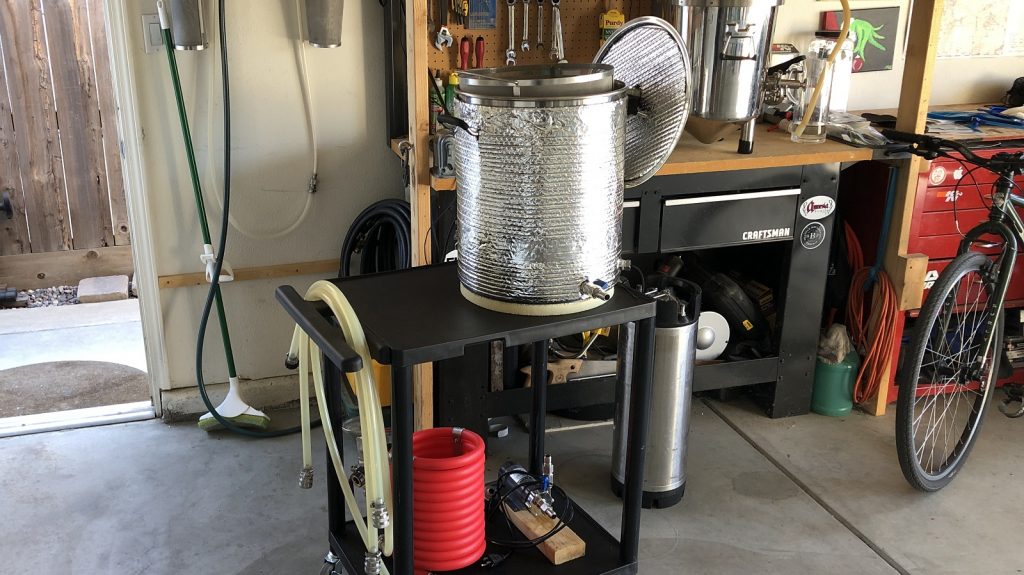
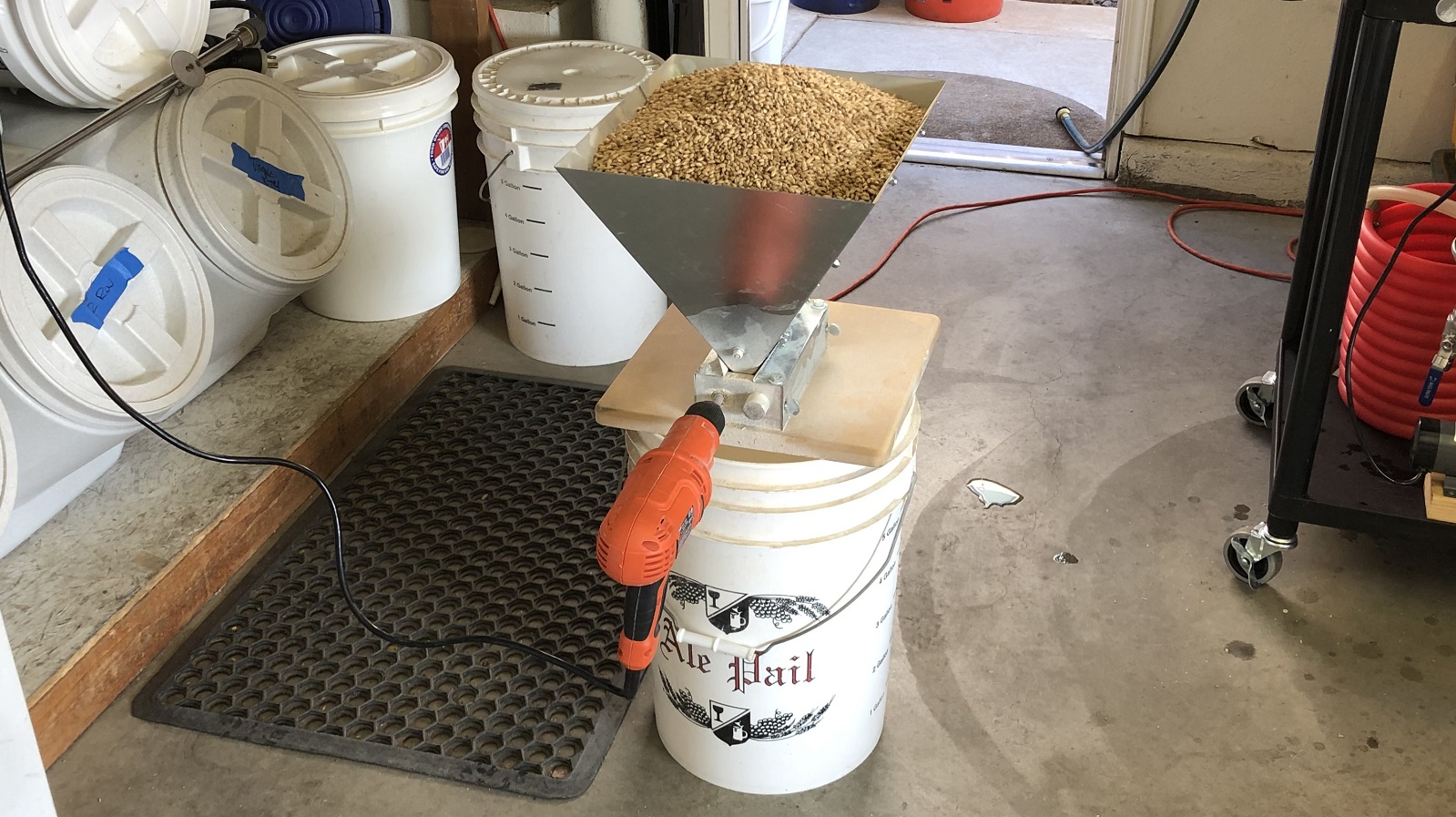
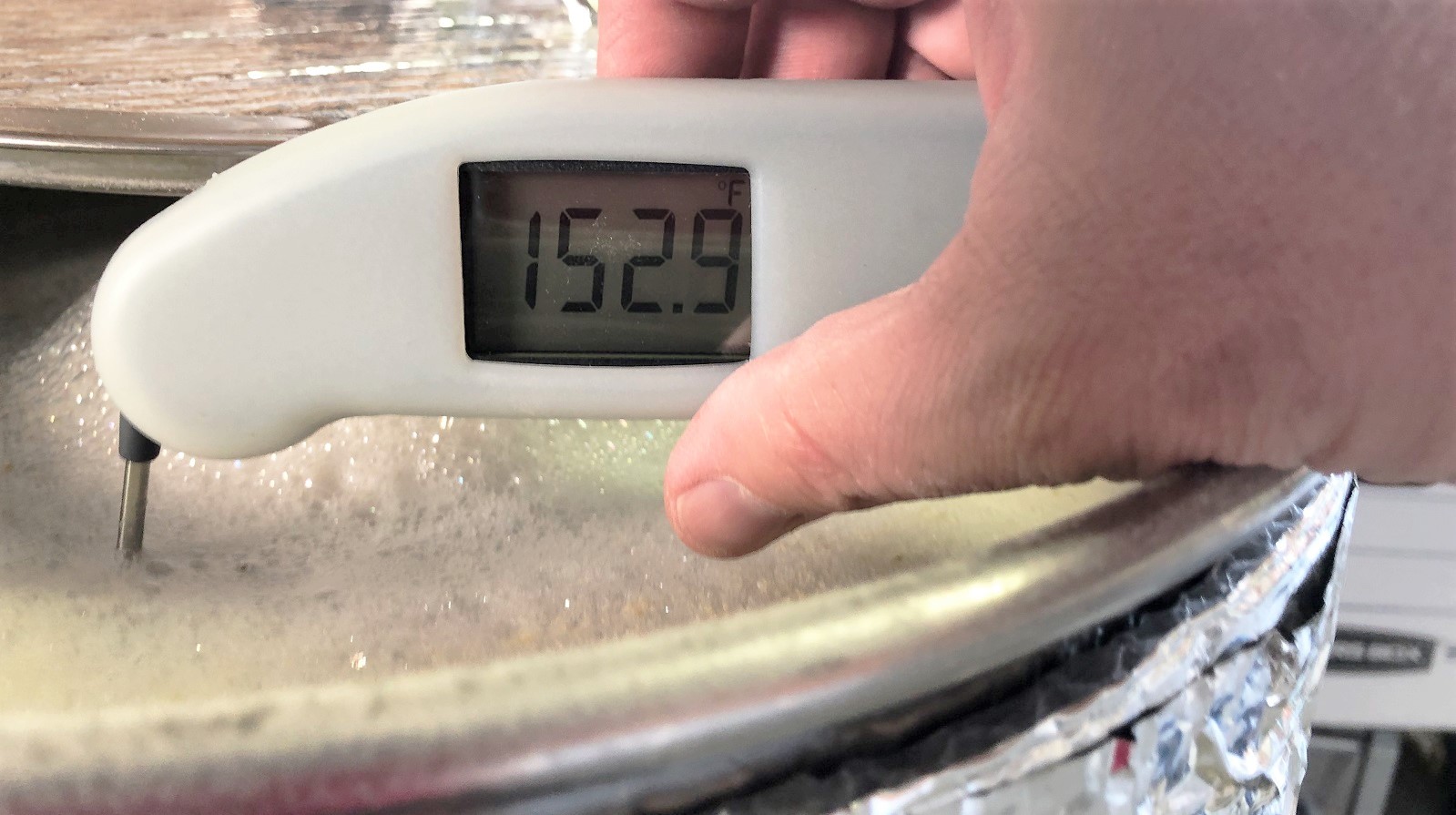
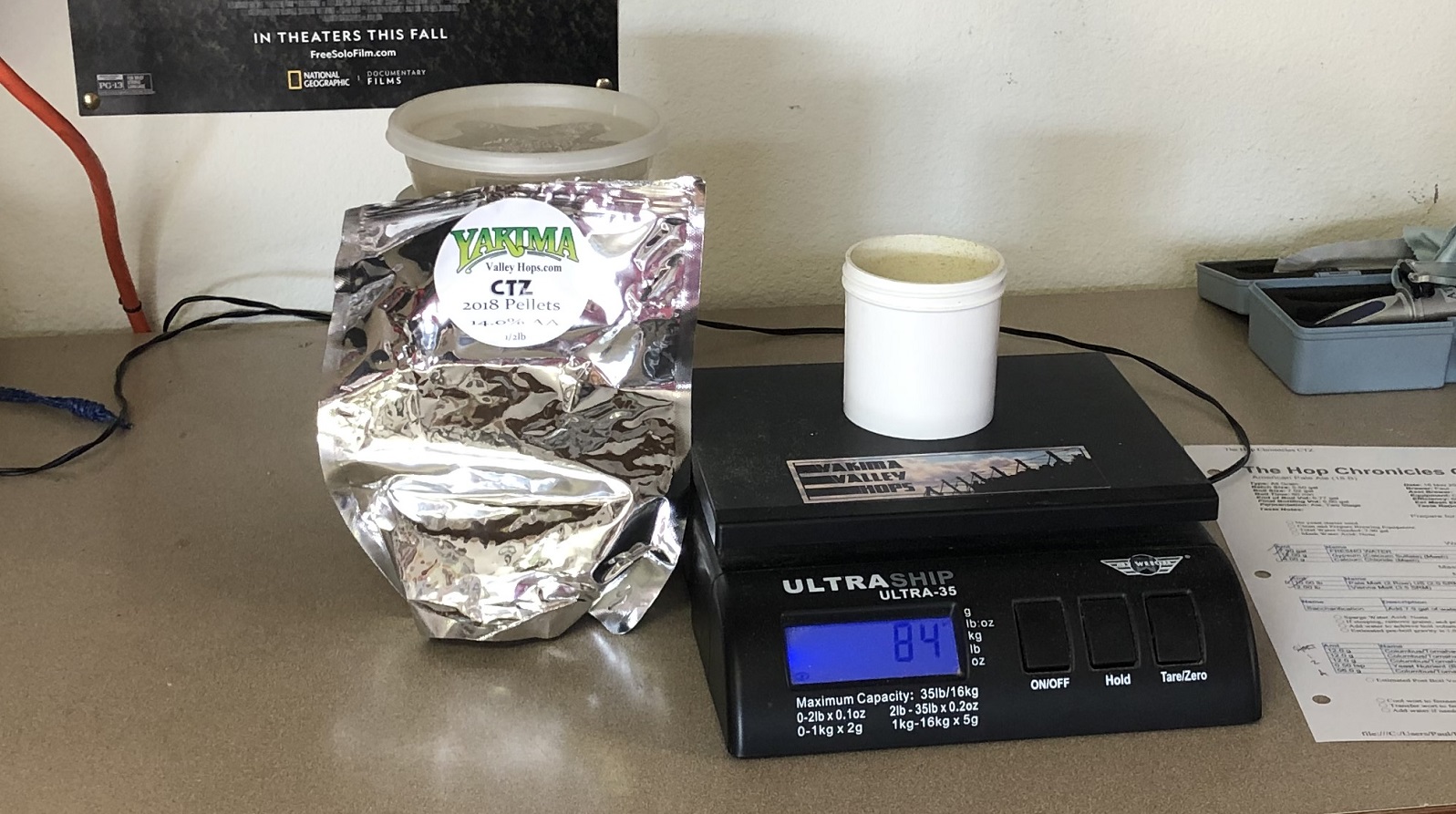
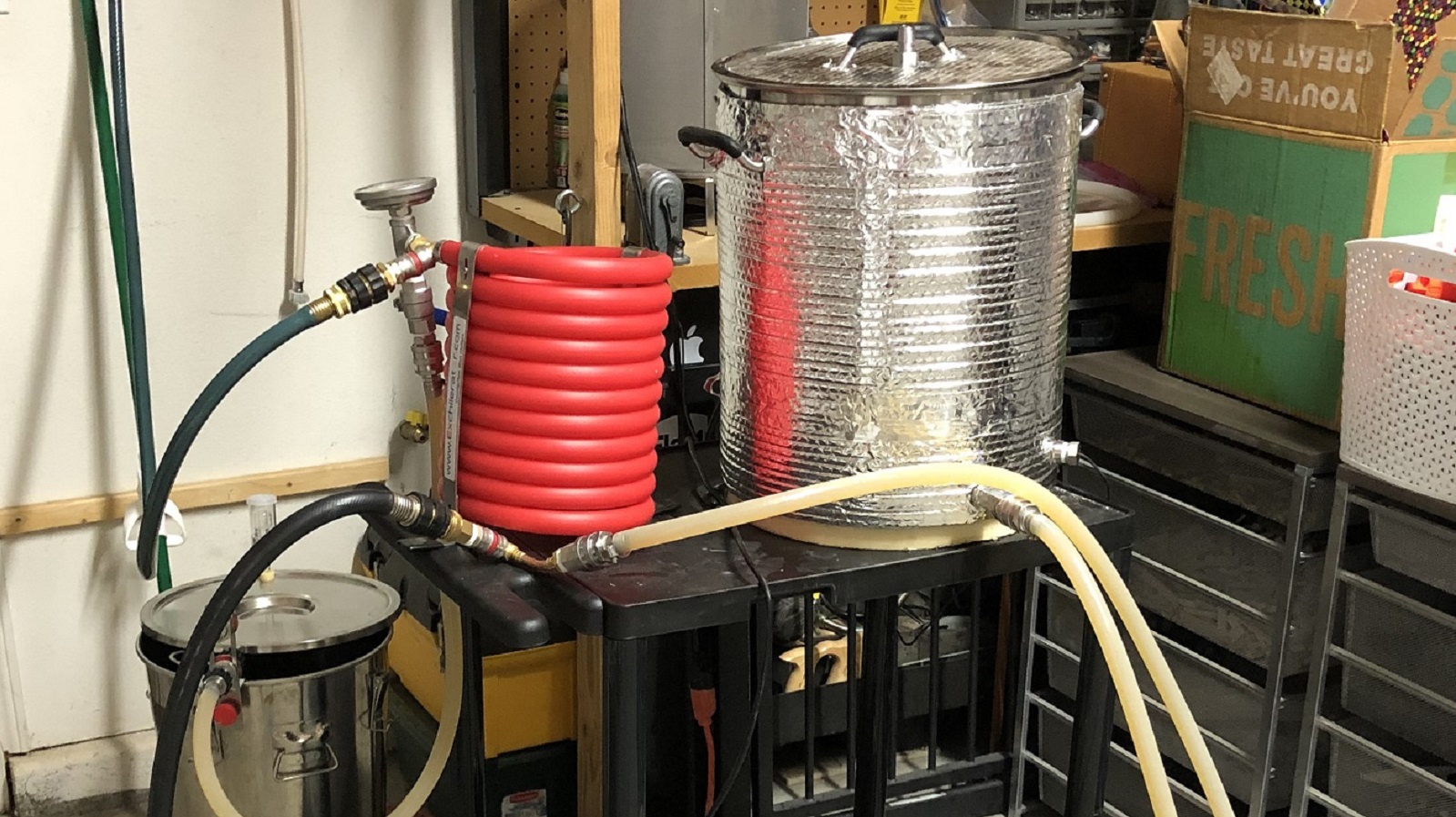
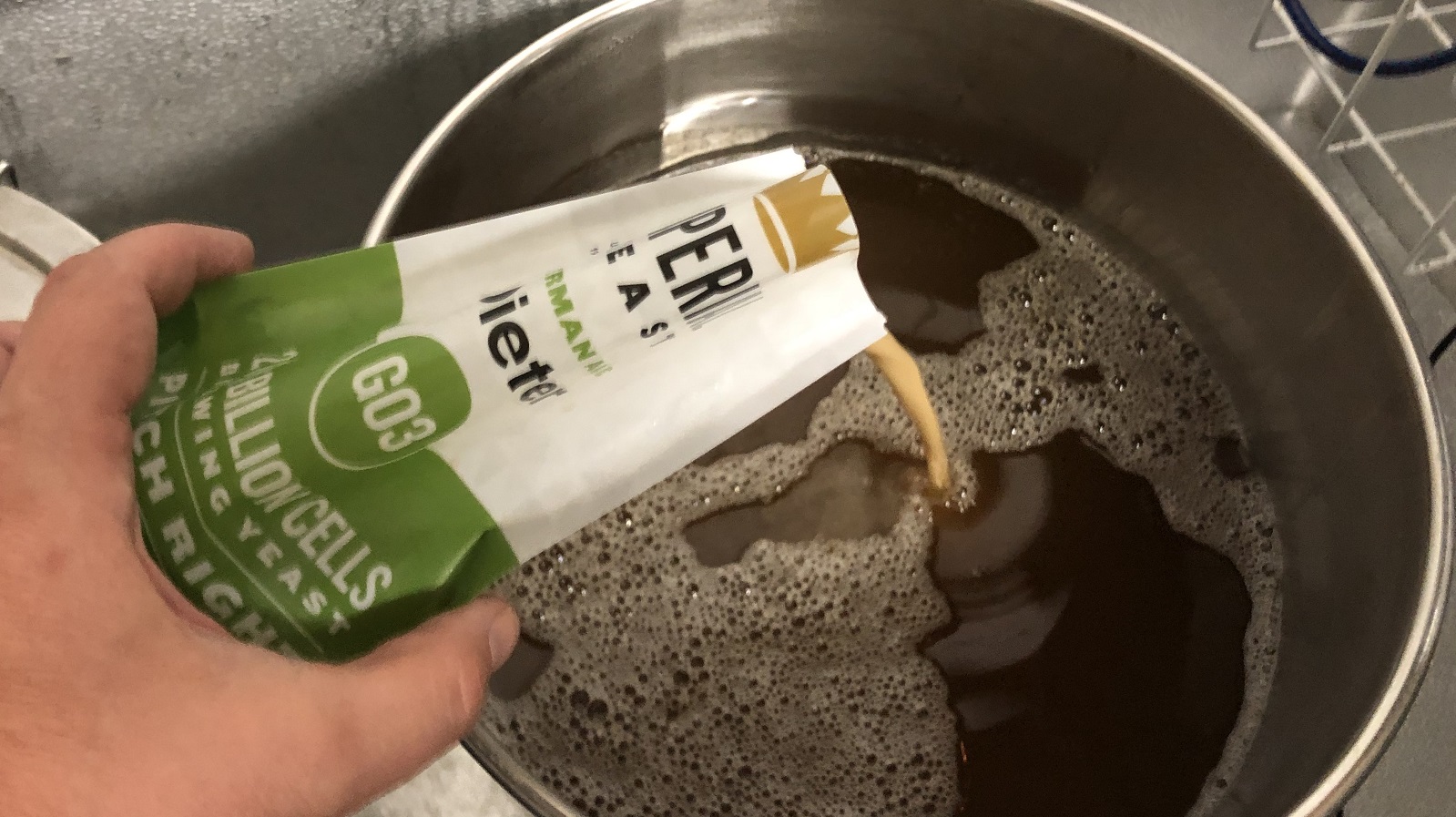
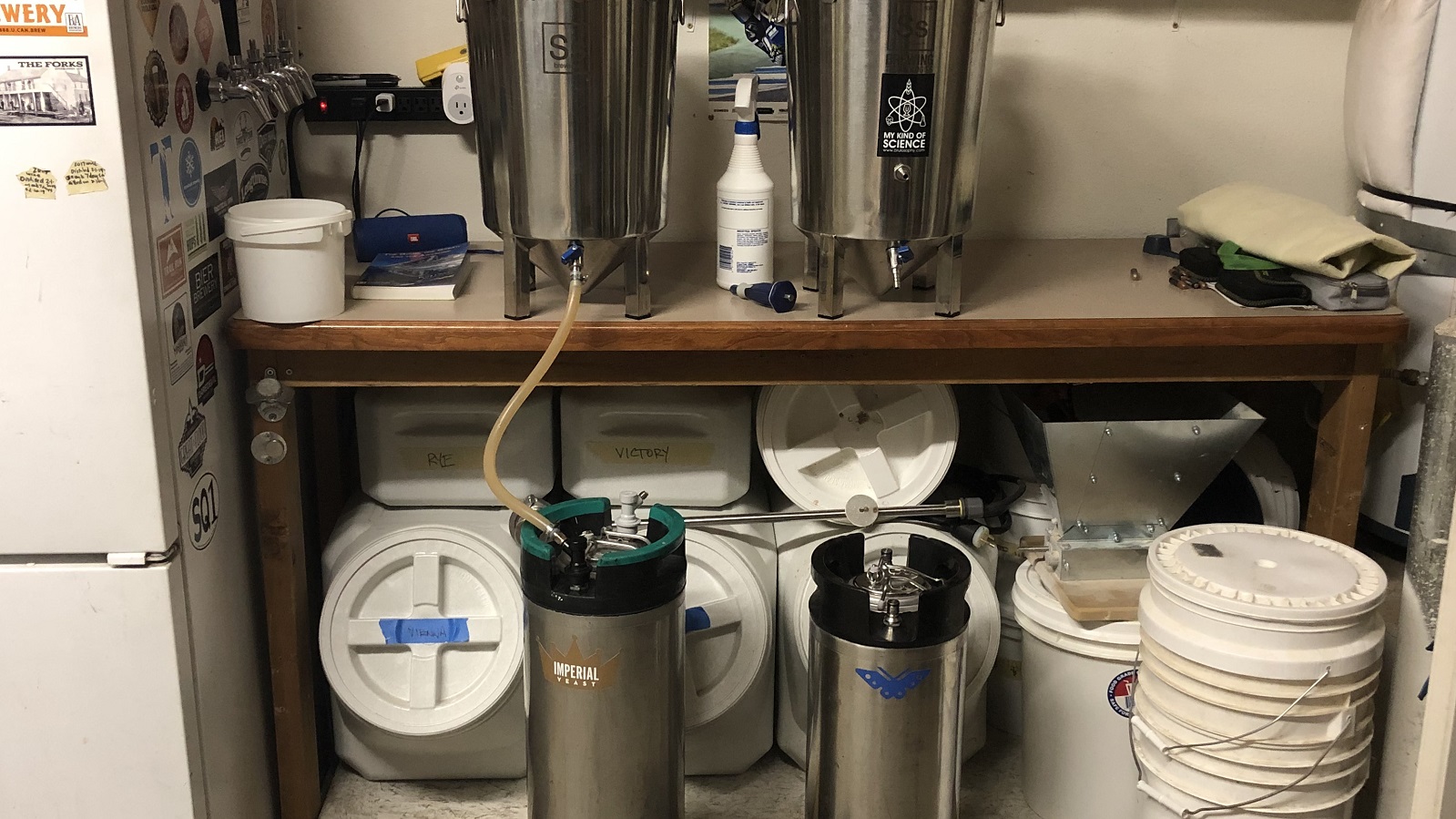
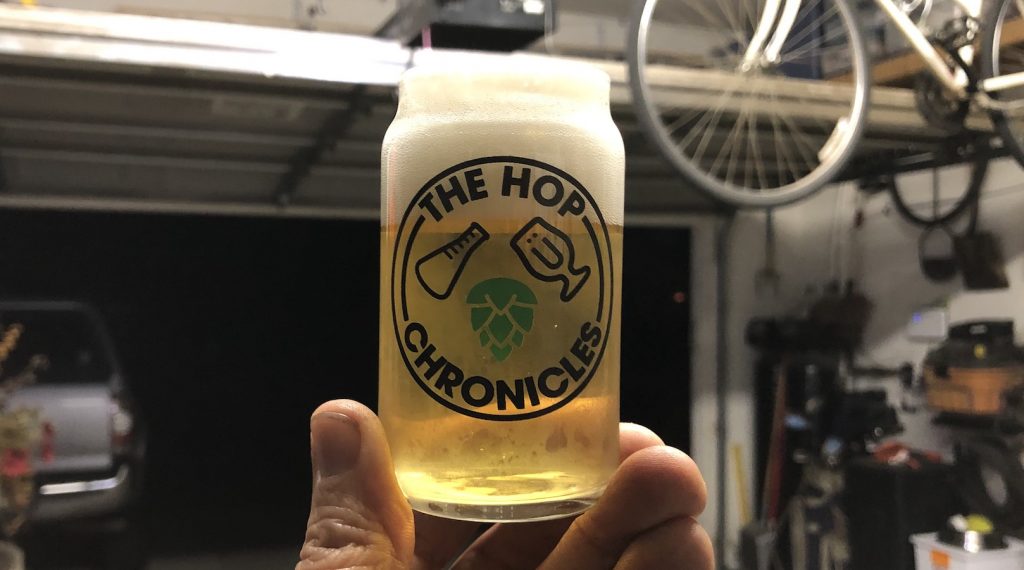

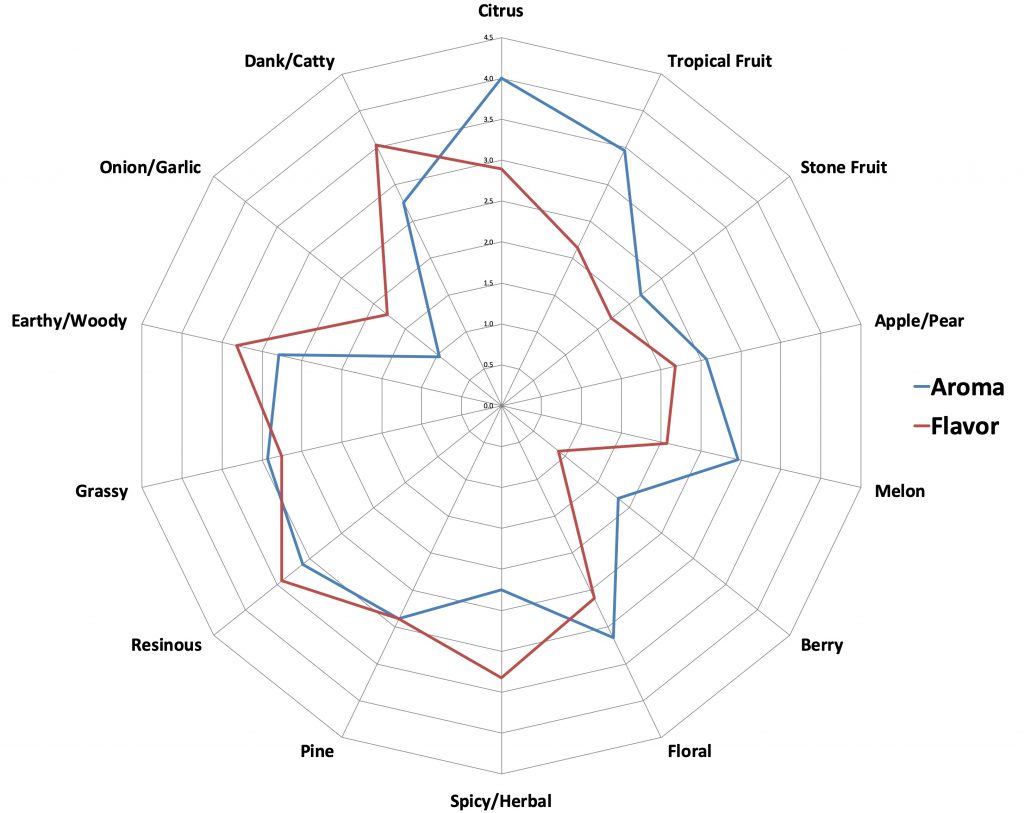
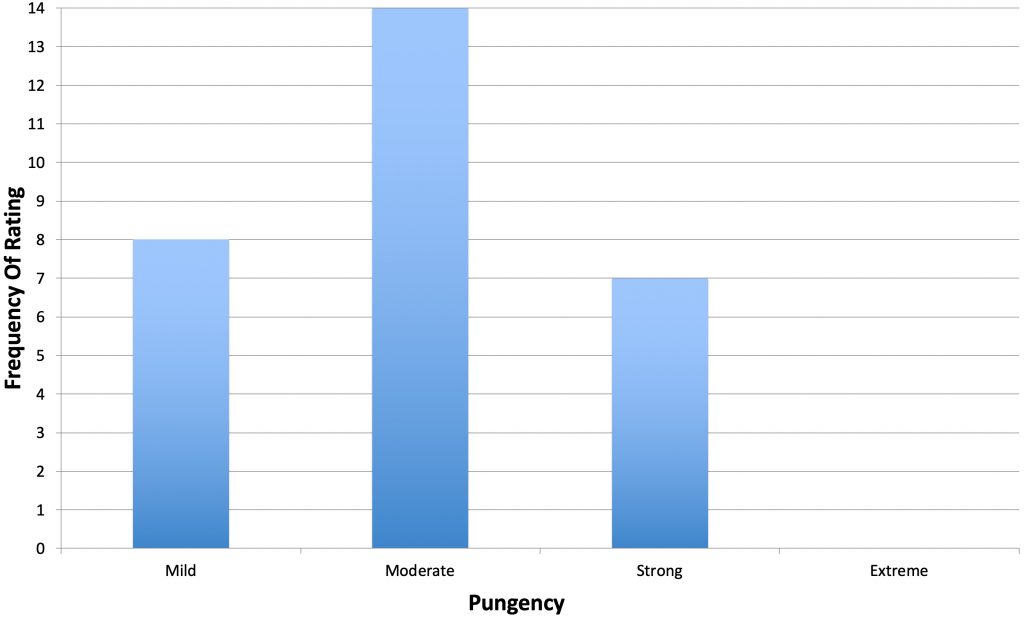
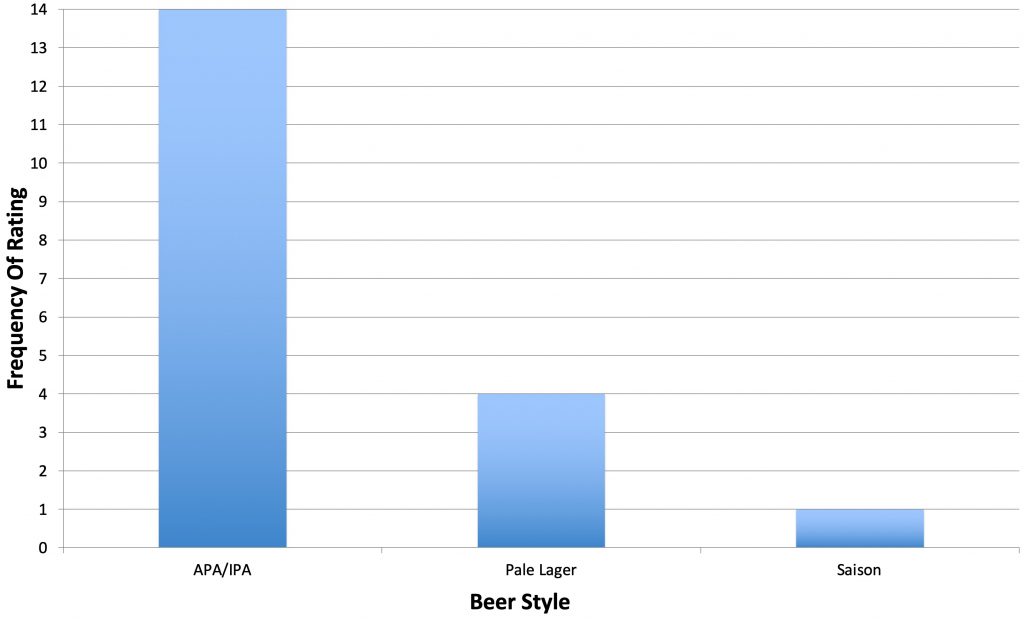
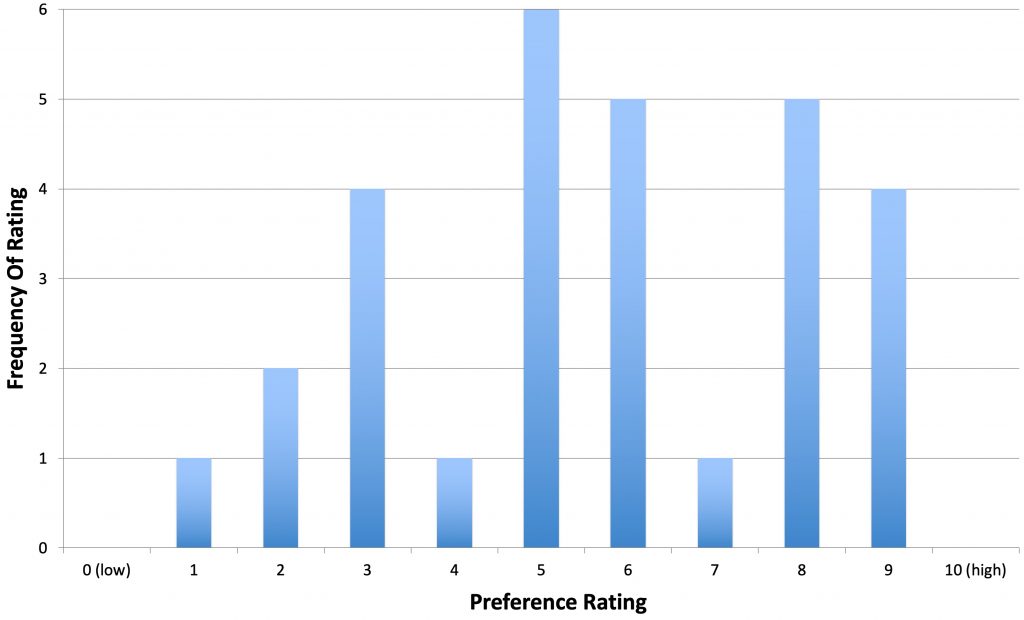











6 thoughts on “The Hop Chronicles | CTZ (2018) Pale Ale”
I love how in almost all these tests, one single person thinks the hop would be good in a saison. Bet he’s a chill dude.
Any ideas on how to minimize the dank flavor in this hop? I have never used it but it has everything I love in hops except the Dank. I would guess using it at 60, whirlpool and dry hop would lessen the dank effect. Or I could be completely off. Any thoughts?
The best way to avoid the dank flavor of CTZ is to use another hop.
I use Columbus as a small portion of a hop blend to make it punchier. In small amounts the darkness helps fill out a hop profile and bing thenother hop flavors out it seems. Kind of like salt in cooking.
I can’t get past the cattiness of this hop, ko matter how many different beers I’ve tried or how well they’re made. It just reminds me of straight up litter box.
Has anyone done a similar one hop pale ale (or IPA) with Falconers Flight? Recently obtained a pound and I wanted to do something similar to a Hop Chronicle test of use the Hop Test Bitter recipe.
I’ve definately done a one hop pale ale with Falconer’s flight and it was one of my favorite beers.. this comment being a year old, I hope you tried it !